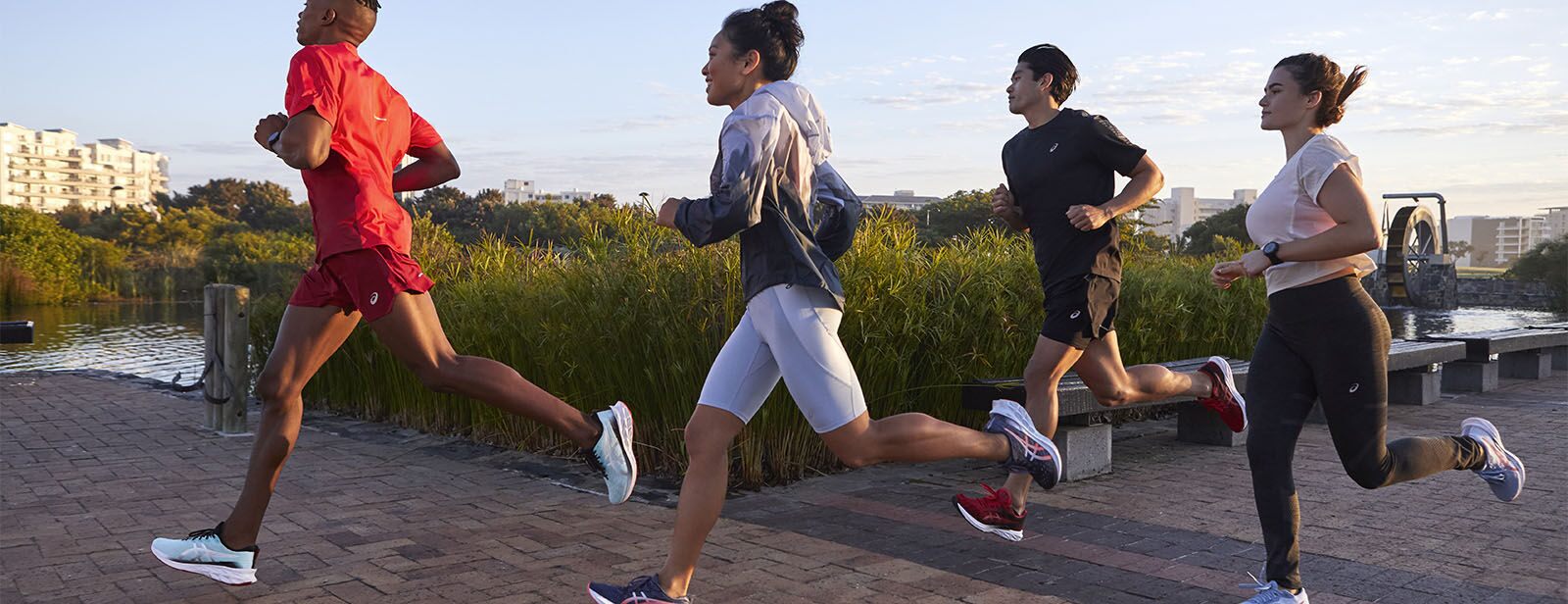
Exercise Daily – Running is a fantastic way to stay fit, but you need more than just a good pair of running shoes to excel in this high-impact sport. Incorporating a variety of exercises into your routine can improve your running performance, reduce the risk of injuries, and enhance your overall fitness. In this article, we’ll explore the ten best exercises for runners, covering everything from lower body strength to mental training. Let’s lace up and dive in!
Running is a great way to get in shape, but it’s important to supplement your running with strength training exercises to prevent injuries and improve your performance. In addition to strength training, runners should also focus on stretching to improve their flexibility and range of motion. Stretching can help to prevent injuries and improve your running performance. If you are new to strength training, it is a good idea to consult with a personal trainer or certified strength and conditioning specialist to get started. They can help you develop a safe and effective workout routine.

Why Exercise is Vital for Runners
Benefits of Incorporating Exercise
Before we get into the specific exercises, let’s understand why incorporating exercise into your running routine is crucial.
Exercise offers several key benefits for runners:
- Injury Prevention: Proper exercise strengthens muscles, tendons, and ligaments, reducing the risk of injuries such as sprains and strains.
- Improved Performance: Certain exercises can enhance your running form, endurance, and speed, leading to better race times.
- Overall Fitness: A well-rounded fitness routine boosts cardiovascular health, flexibility, and core strength.
Now that you know why exercise is vital, let’s explore the top ten exercises for runners.

The Top 10 Exercises
1. Running Itself
Running is, of course, the best exercise for runners. Regular running sessions build endurance, improve cardiovascular health, and strengthen leg muscles. Remember to mix up your running routine with various types of runs, such as long, tempo, and interval runs, to maximize benefits.
2. Strength Training
Strength training is essential for building strong muscles, which are crucial for supporting your joints and maintaining proper form while running. Here are some key strength training exercises:
a. Squats
Squats target your quads, hamstrings, and glutes, improving your leg strength. Start with bodyweight squats and gradually add weights as you progress.
b. Lunges
Lunges work on balance and strengthen the quadriceps, hamstrings, and glutes. You can do forward, reverse, and lateral lunges to target different muscle groups.
c. Planks
Planks are excellent for core strength. A strong core helps maintain stability and proper posture while running.
3. Yoga
Yoga enhances flexibility and balance, two qualities that are beneficial for runners. It also promotes relaxation and can help prevent injuries caused by muscle tightness.
4. Cross-Training
Cross-training activities offer a break from running while still improving overall fitness. Consider:
a. Swimming
Swimming is a full-body workout that’s gentle on the joints. It improves cardiovascular fitness and enhances lung capacity.
b. Cycling
Cycling builds leg strength and endurance, making it an excellent complement to running.
5. Plyometrics
Plyometric exercises, like box jumps and burpees, improve explosive power and agility. These can make you a more dynamic and faster runner.
6. Stretching
Stretching exercises, such as dynamic and static stretching, keep your muscles flexible and reduce the risk of injuries.
7. Core Workouts
A strong core improves running posture and stability. Incorporate exercises like leg raises and bicycle crunches into your routine.
8. Hill Sprints
Running uphill strengthens your leg muscles and cardiovascular system. It’s a challenging workout that mimics race conditions.
9. High-Intensity Interval Training (HIIT)
HIIT workouts improve anaerobic fitness and increase your running speed and stamina.
10. Trail Running
Trail running adds variety to your routine and challenges different muscle groups. It also connects you with nature, reducing mental stress.

How to Incorporate These Exercises
A Balanced Workout Routine
Create a balanced workout routine to get the most out of these exercises. Incorporate strength training, flexibility work, and cross-training into your weekly schedule.
Weekly Schedule
Here’s a sample weekly schedule to help you integrate these exercises:
- Monday: Strength training (Squats, Lunges, Planks)
- Tuesday: Yoga or stretching
- Wednesday: Cross-training (Swimming or Cycling)
- Thursday: Plyometrics
- Friday: Core workouts
- Saturday: Long run with hill sprints
- Sunday: Rest or light trail run
Listen to Your Body
While these exercises are highly beneficial, listening to your body is crucial. If you experience pain or discomfort, consult a professional and adjust your routine accordingly. Every runner is unique, and what works for one may not work for another.
Essential Strength Training Exercises for Runners
As a runner, you know the importance of endurance and cardiovascular fitness. However, don’t overlook the significance of strength training. Incorporating strength training exercises into your routine can help you build a strong foundation, prevent injuries, and improve your running performance. Here are some essential strength training exercises tailored specifically for runners:
1. Squats
Compound Exercise
Muscles Targeted: Quadriceps, Hamstrings, Glutes, Lower Back, and Core
How to Do It:
- Stand with your feet shoulder-width apart.
- Lower your body by bending your knees and pushing your hips back as if you’re sitting in a chair.
- Keep your back straight and chest up.
- Go as low as your flexibility allows without discomfort.
- Push through your heels to return to the starting position.
- Perform 3 sets of 12-15 reps.
Squats are excellent for strengthening the lower body, especially the muscles used in running.
2. Lunges
Compound Exercise
Muscles Targeted: Quadriceps, Hamstrings, Glutes, and Calves
How to Do It:
- Stand with your feet hip-width apart.
- Take a step forward with your right foot and lower your body until both knees are bent at 90-degree angles.
- The back knee should hover just above the ground.
- Push off your front foot to return to the starting position.
- Alternate legs and repeat.
- Perform 3 sets of 12-15 reps per leg.
Lunges improve leg strength, balance, and stability, crucial for a runner’s performance.
3. Planks
Isometric Exercise
Muscles Targeted: Core (Abdominals, Obliques), Lower Back, and Shoulders
How to Do It:
- Start in a push-up position with your arms straight under your shoulders.
- Engage your core and hold your body in a straight line from head to heels.
- Keep your abs tight and hold for as long as you can.
- Beginners can start with 20-30 seconds and progress from there.
- Perform 3 sets.
Planks strengthen your core, which is essential for maintaining proper running form and preventing injuries.
4. Hip Raises (Glute Bridges)
Isolation Exercise
Muscles Targeted: Glutes, Lower Back, and Hamstrings
How to Do It:
- Lie on your back with your knees bent and feet flat on the ground.
- Place your arms at your sides with palms facing down.
- Lift your hips off the ground by squeezing your glutes.
- Keep your feet, shoulders, and head in contact with the ground.
- Hold for a moment at the top.
- Lower your hips back down.
- Perform 3 sets of 12-15 reps.
Hip raises help strengthen the glutes, which are crucial for running power and stability.
5. Calf Raises
Isolation Exercise
Muscles Targeted: Calves
How to Do It:
- Stand with your feet hip-width apart.
- Raise your heels as high as possible by pushing through the balls of your feet.
- Hold at the top for a moment.
- Lower your heels back down.
- Perform 3 sets of 15-20 reps.
Calf raises enhance calf strength, which is vital for push-off while running.
6. Russian Twists
Core Exercise
Muscles Targeted: Obliques and Core
How to Do It:
- Sit on the ground with your knees bent and feet flat.
- Lean back slightly, keeping your back straight.
- Clasp your hands together or hold a weight.
- Lift your feet off the ground and balance on your glutes.
- Twist your torso to the right, bringing your hands or weight to the right side of your hip.
- Return to the center and then twist to the left.
- Perform 3 sets of 12-15 reps per side.
Russian twists strengthen your obliques, improving rotational stability while running.
7. Single-Leg Deadlifts
Compound Exercise
Muscles Targeted: Hamstrings, Glutes, Lower Back, and Core
How to Do It:
- Stand with your feet hip-width apart, holding a dumbbell or kettlebell in one hand.
- Shift your weight onto one leg while keeping a slight bend in the knee.
- Hinge at your hips and lower your torso toward the ground.
- Keep your back straight and extend your free leg behind you for balance.
- Lower the weight as far as your flexibility allows.
- Return to the starting position.
- Perform 3 sets of 10-12 reps per leg.
Single-leg deadlifts enhance balance, stability, and hamstring strength, important for efficient running.
Incorporate these strength training exercises into your weekly routine to build a solid foundation and become a stronger, injury-resistant runner. Remember to maintain proper form, gradually increase intensity, and consult a fitness professional if needed to tailor a program to your specific needs. Stronger muscles will improve your performance and help you enjoy your runs more and stay injury-free.

Conclusion
Incorporating these ten exercises into your routine can transform you into a stronger, more resilient runner. Whether you’re a seasoned athlete or just starting, a well-rounded approach to fitness is key to success. So, lace up your shoes, hit the road, and never stop striving for your personal best.
FAQs – The 10 Best Exercises for Runners
Q: How often should I do these exercises as a runner?
Aim for a mix of exercises at least 2-3 times a week, depending on your training intensity and goals.
Q: Can these exercises help with weight loss as well?
Absolutely! These exercises can boost your metabolism and contribute to weight loss when combined with a balanced diet.
Q: Is it necessary to do all ten exercises, or can I choose a few that suit me best?
You can tailor your routine to your needs and preferences. However, including a variety of exercises is generally more beneficial.
Q: Should I warm up before doing these exercises?
Yes, warming up is crucial to prevent injuries. Incorporate dynamic stretches or light jogging before diving into the exercises.
Q: How long does it take to see improvements in my running performance with these exercises?
It varies from person to person, but with consistent effort, you can expect to see positive changes in a few weeks to a couple of months.




